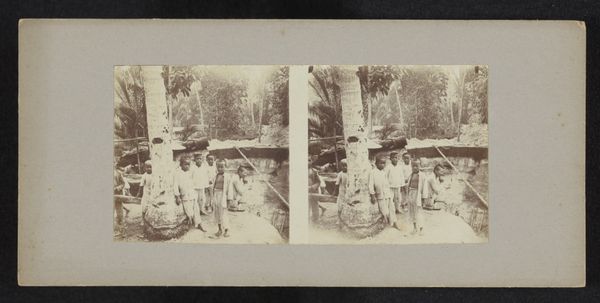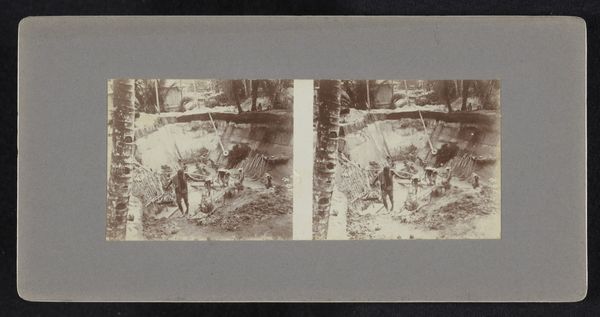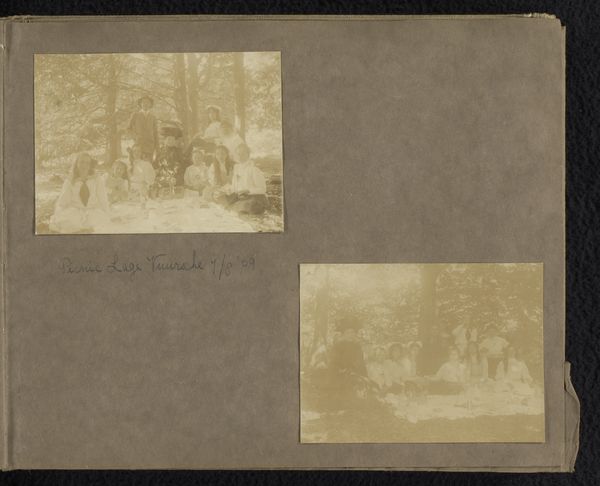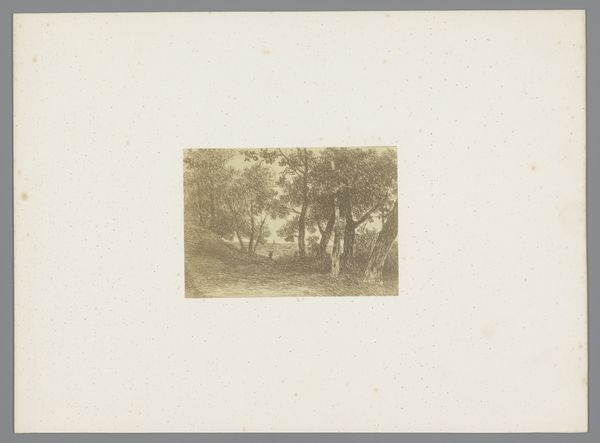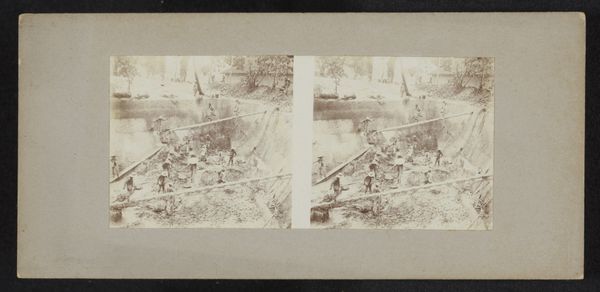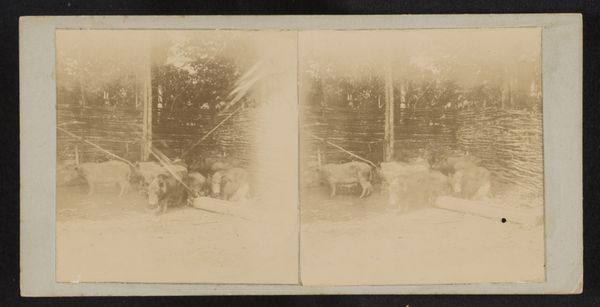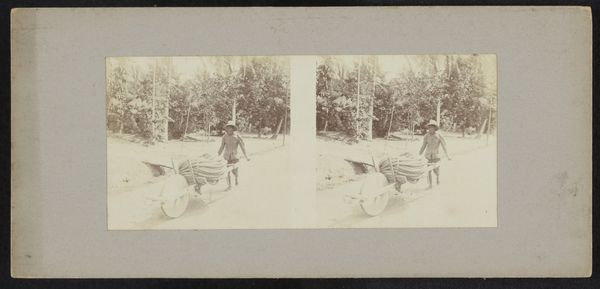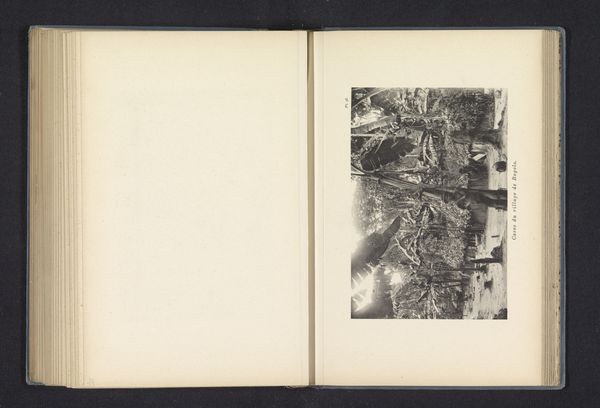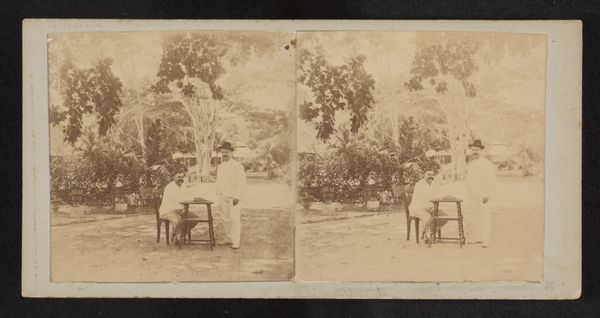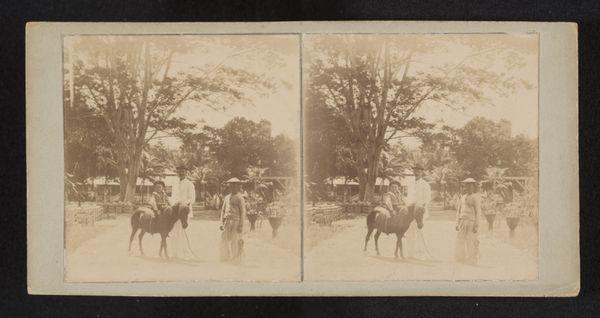
photography, gelatin-silver-print
#
portrait
#
landscape
#
photography
#
gelatin-silver-print
Dimensions: height 52 mm, width 53 mm, height 88 mm, width 178 mm
Copyright: Rijks Museum: Open Domain
Curator: What immediately strikes me about this gelatin silver print, simply titled "Kinderen," which translates to "Children," is its hazy sepia tone, softening what appears to be a candid glimpse into life, sometime between 1900 and 1922. It is currently held at the Rijksmuseum. Editor: The composition, though, is anything but candid. See how the children are meticulously arranged? There's a clear hierarchy, even in their placement and gaze. The tonal range, despite the overall softness, delineates a definite foreground, middle ground, and background, giving depth to an otherwise compressed space. Curator: Indeed, this visual structuring reinforces a power dynamic. The colonial gaze is quite palpable here, turning individuals into types, representative of an entire group rather than valued as unique persons. The "exotic other," is laid bare for consumption and reflection. Editor: And how does the landscape factor into that symbolic framing? The very framing device in the distance—trees lining a path to a primitive shack—it feels deliberate, like a staged tableau to be analyzed through shape and form. Even the bucket one of the children holds reflects a formal, almost sculptural shape. Curator: Exactly. These children bearing heavy water and smaller food vessels aren't presented as playing innocently. Instead, these "Kinderen" embody a burden, symbolic of the colonial project where indigenous people must bear the literal and symbolic weight of exploitation. Editor: I can't deny your read of the photograph, it gives historical perspective into this time. But there's a fragility inherent in the photograph itself. The fading emulsion lends an additional layer of vulnerability. The muted contrast only highlights the texture, creating an almost ephemeral image. It seems that is how we preserve and consume an artifact of human life. Curator: It's a strange push-pull, isn’t it? Both an artifact of casual documentation, and as we are dissecting the image as the product of deliberate composition, rife with implied cultural messages about civilization and otherness. Editor: Right, it shows us how a medium—photography, in this case—can contain so many conflicting layers within a single plane. From surface to deeper understanding of history and context. Curator: From children’s faces, so much is felt; it's a deeply disturbing image—more for what we project onto it than what is present at first sight.
Comments
No comments
Be the first to comment and join the conversation on the ultimate creative platform.

